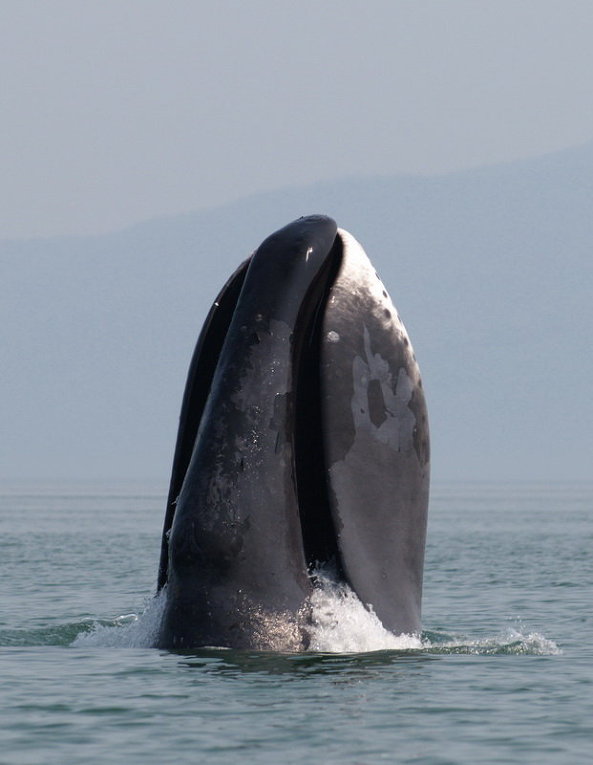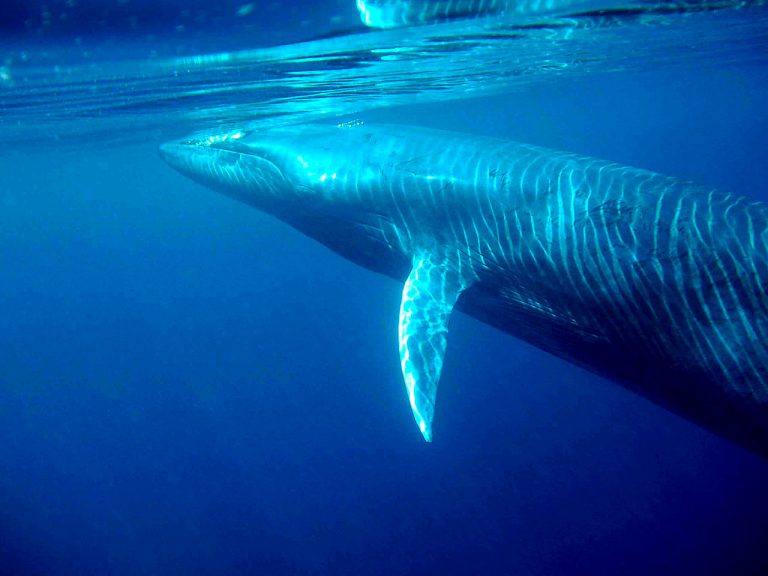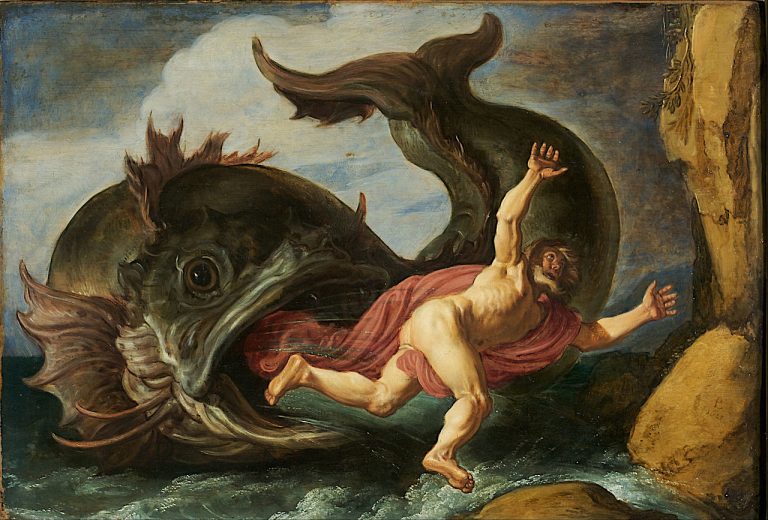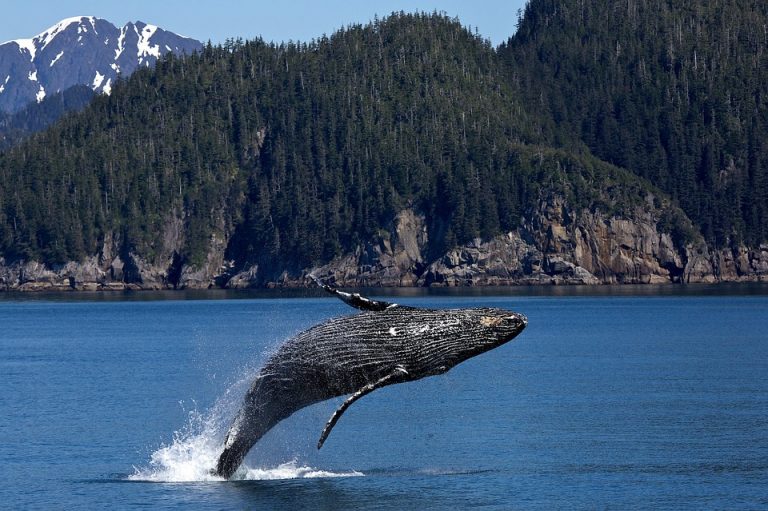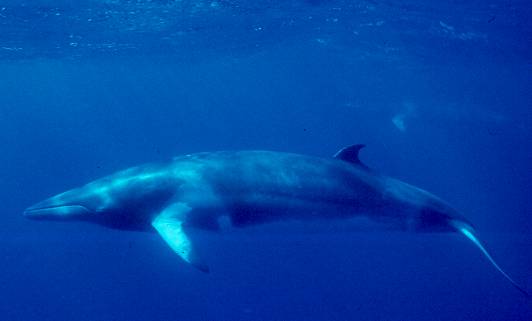Species Profile: The Common Bryde’s Whale
The Common Bryde’s Whale is a baleen whale known for being inquisitive about humans.
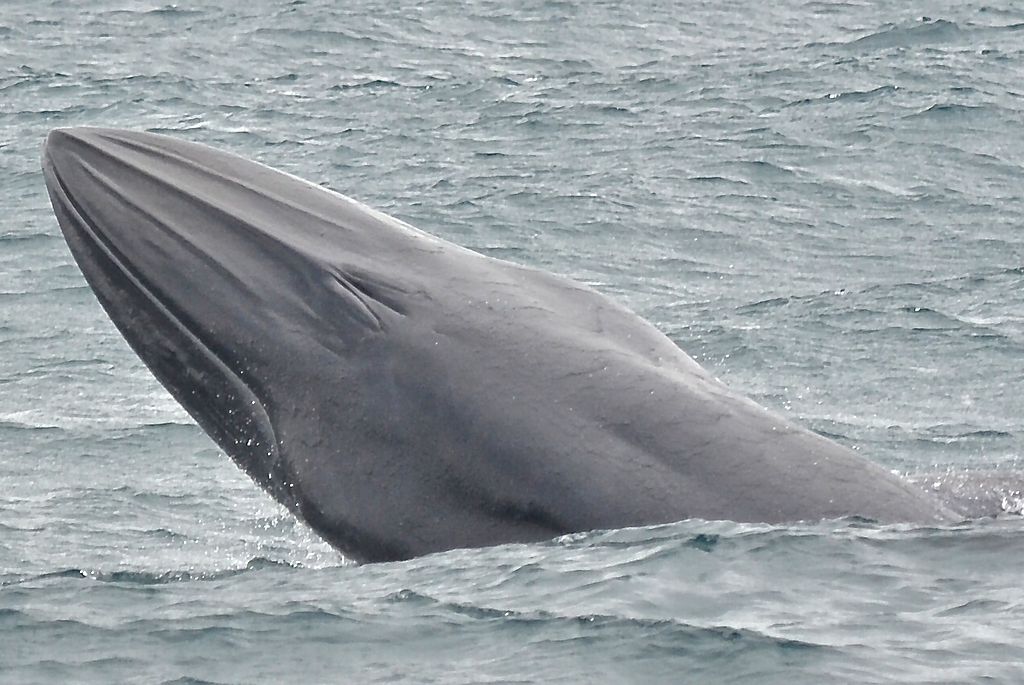
The Common Bryde’s whale is one of two species of rorquals that are referred to by the name “Bryde.”
The common variant is a moderately sized whale occurring worldwide in warm temperate and tropical waters. On the other hand, the second variant, the Eden’s whale, is a smaller whale mostly restricted to Indo-Pacific waters.
Both species are smaller in size than the Sei whale, for instance, but larger than the relatively diminutive Minke whales.
The Common Bryde’s whale is also a baleen whale; a filter feeder, along with the better known whales like the humpback and the blue whale. Bryde’s whales have a very sleek and elongated build, even more so than the also slender Fin whale. Their bodies are a dark smoky gray shade with white underside.
This whale is known for somewhat erratic behavior. For example, they will surface at irregular intervals and quickly change direction suddenly for no apparent reasons. Common Bryde’s whales are social and are often seen in groups of two or up to 20 individuals at a time.
Bryde’s whales dive down as far as 1,000 feet (300 meters) and they’ll stay down for about 5 to 15 minutes (20 minutes at the most).
The IUCN lists the Common Bryde’s Whale as a Data Deficient species.
1) Scientific Name
Balaenoptera Brydei
2) Scientific Classification:
- Kingdom: Animalia
- Phylum: Chordata
- Class: Mammalia
- Order: Cetacea
- Family:Balaenopteridae
- Genus: Balaenoptera
- Species: Balaenoptera Brydei
3) Average/Maximum Length
Adults of both sexes off South Africa range from 13.1 meters (43 feet) to 14.4 meters (47 feet). Though the ones off the Japanese coast are smaller at between 11.9 meters (39 feet) and 12 meters (39 feet).
The largest individuals measured were a 15.51 meter (50.9 feet) female and 14.56 meter (47.8 feet) male off South Africa.
Females are slightly larger than males.
4) Average/Maximum Weight
The body mass of a Common Bryde’s whales can range from 12 to 25 metric tons (13 to 28 short tons).
5) Maximum Swimming Speed
The Common Bryde’s whale normally swims at 1.6 to 6.4 km/h (1 to 4 mph). But it can sometimes reach 19 to 24 km/h (12 to 15 mph).
The Common Bryde’s whale emits a very powerful, low frequency vocalization that closely resembles a human moan.
6) Interaction With/Danger To Humans
Historic evidence indicates that the common Bryde’s whale was not initially targeted by hunters. However, that changed significantly when other species of whales began to decline due to excessive hunting.
To date some countries still hunt Bryde’s whales. They include Japan (for scientific research) and Norway (for subsistence).
Apart from the above, the threats faced by Bryde’s whales today include ship collisions and sonar disturbance from vessels.
7) Reproduction Details
This species of whale breed in any season of year but especially in Autumn. Females produce one calf every other year after a 12-month gestation period.
Newborns measure approximately about 3.4 to 4.0 meters (11 to 13 feet) and weigh 1,000 kg (2,200 lbs). Their mothers nurse them on milk for between 6 and 12 months.
Calves of either sex mature sexually between 8 and 13 years old.
8) Diet/Hunting Pattern Of The Common Bryde’s Whale
They are filter feeders and their diet is made up of a wide variety of fish, planktonic crustaceans, and cephalopods.
These whales hunt using several techniques like skimming the water surface, lunging, twisting, and bubble nets.
The Bryde’s whale is somewhat inquisitive about humans and will often approach or swim alongside boats.
9) Alternative Names
- Tropical Whale
10) Population And Conservation Status
Their population estimate is not exact but could be in the region of 90,000 to 100,000 individuals.
However, there is still very little information about the present status of these creatures. As a result, the IUCN lists the entire species as Data Deficient.
11) Ancestry And History
The Bryde’s whale gets its name from Johan Bryde. He was the Norwegian consul to South Africa and he helped with the building of the first whaling factory in Durban in 1909.
As mentioned before, there are two variants of this whale; the common variant and the Eden’s whale.
These whales are closely related to the Sei whale and it’s sometimes difficult to tell them apart from a distance. In fact, Japanese whalers called them the “look-alike whale” due to this resemblance.
12) Distribution and Habitat
This is the only species among the baleen whale that spends the entire year in tropical and subtropical waters.
They are frequent in parts of the Atlantic, Pacific and Indian Oceans such as the Gulf of California, Peru, Ecuador, Chile, New Zealand, the Philippines, and Indonesia.

